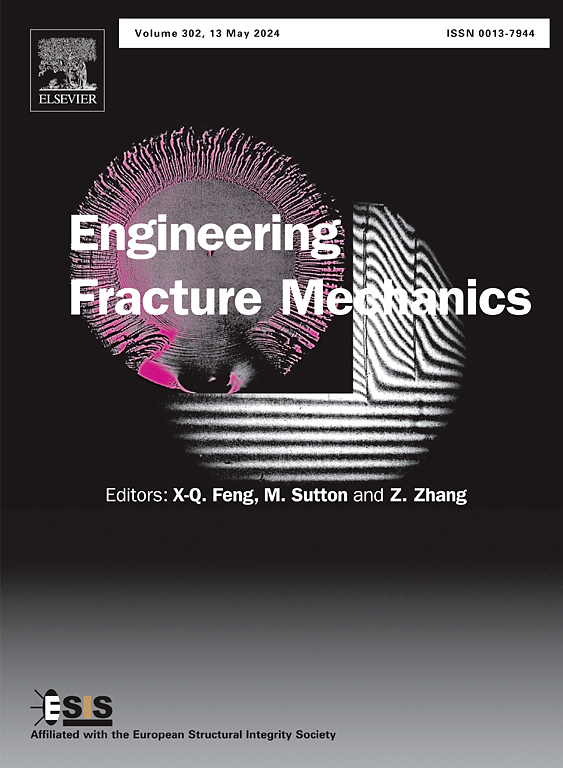A geometric internal bond model for fracture of brittle materials
IF 5.3
2区 工程技术
Q1 MECHANICS
引用次数: 0
Abstract
A Geometric Internal Bond Model is proposed, emphasizing its geometric attributes of discontinuous deformation of solid materials. This model is motivated by the inherent connection between nonlocal vector calculus and geometric decomposition of virtual internal bond for each material point in continuum. A nonlocal governing equation together with an exact nonlocal force boundary condition is derived from a nonlocal variational principle through nonlocal vector calculus. Based on nonlocal operators in nonlocal vector calculus, a nonlocal deformation gradient tensor is developed to describe the discontinuities that appear in the crack zone of materials. Two micro-modulus, corresponding to the radial and tangential deformations of virtual internal bonds, are proposed to keep consistency of the virtual bond energy in the proposed model and the strain energy in Classical Continuum Mechanics. It is shown that the proposed model is asymptotically compatible with the Classical Continuum Mechanics when the characteristic length of nonlocality approaches zero. Moreover, a geometric crack criterion is proposed that involves radial and tangential deformation of the virtual internal bond to capture the mixed mode fracture. We demonstrate the applicability of the proposed model for capturing the propagation of cracks in brittle materials by several numerical examples. The proposed model shows great potential for numerical simulations of fractures in brittle materials.
脆性材料断裂的几何内键模型
提出了一种强调固体材料不连续变形几何属性的几何内键模型。该模型是由非局部向量演算与连续介质中各物质点的虚内键的几何分解之间的内在联系所驱动的。利用非局部矢量演算方法,利用非局部变分原理,导出了非局部控制方程和精确的非局部力边界条件。基于非局部向量微积分中的非局部算子,提出了非局部变形梯度张量来描述材料裂纹区域出现的不连续。为了使模型中的虚拟键能与经典连续介质力学中的应变能保持一致,提出了对应于虚拟内键径向和切向变形的两个微模量。结果表明,当非定域特征长度趋近于零时,该模型与经典连续介质力学渐近相容。此外,还提出了一种包含虚拟内键径向和切向变形的几何裂纹准则,以捕获混合模式断裂。我们通过几个数值例子证明了所提出的模型在捕捉脆性材料裂纹扩展方面的适用性。该模型在脆性材料断裂数值模拟中具有很大的应用潜力。
本文章由计算机程序翻译,如有差异,请以英文原文为准。
求助全文
约1分钟内获得全文
求助全文
来源期刊
CiteScore
8.70
自引率
13.00%
发文量
606
审稿时长
74 days
期刊介绍:
EFM covers a broad range of topics in fracture mechanics to be of interest and use to both researchers and practitioners. Contributions are welcome which address the fracture behavior of conventional engineering material systems as well as newly emerging material systems. Contributions on developments in the areas of mechanics and materials science strongly related to fracture mechanics are also welcome. Papers on fatigue are welcome if they treat the fatigue process using the methods of fracture mechanics.

 求助内容:
求助内容: 应助结果提醒方式:
应助结果提醒方式:


